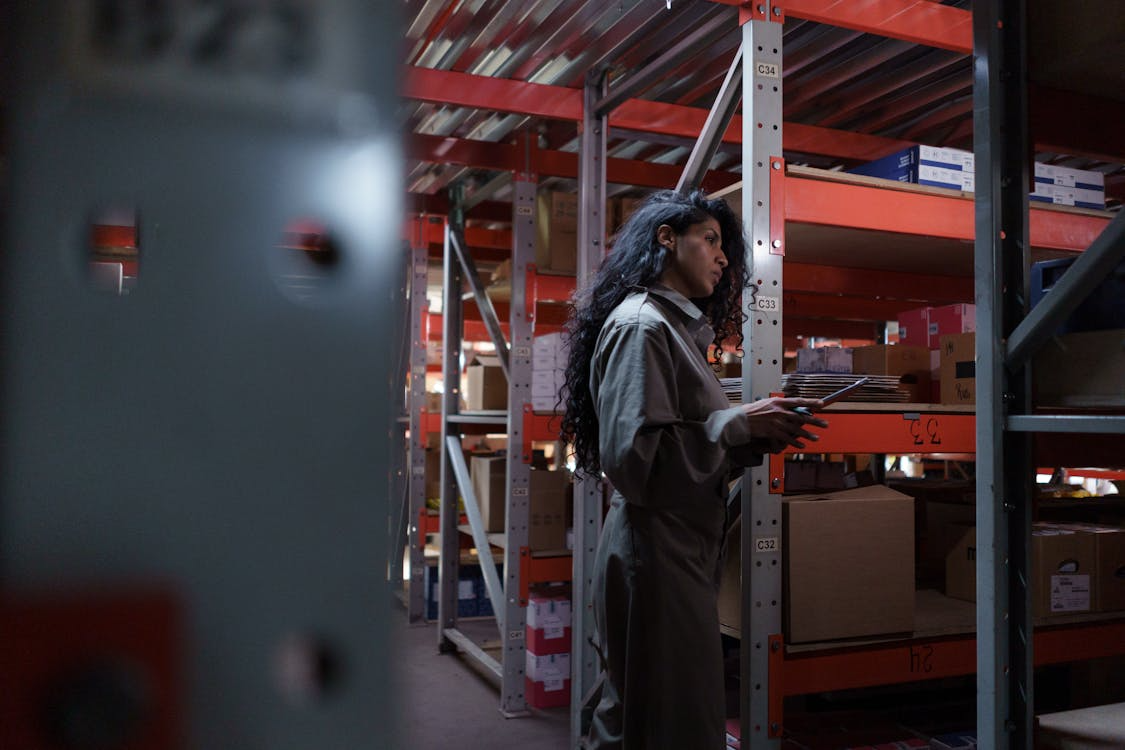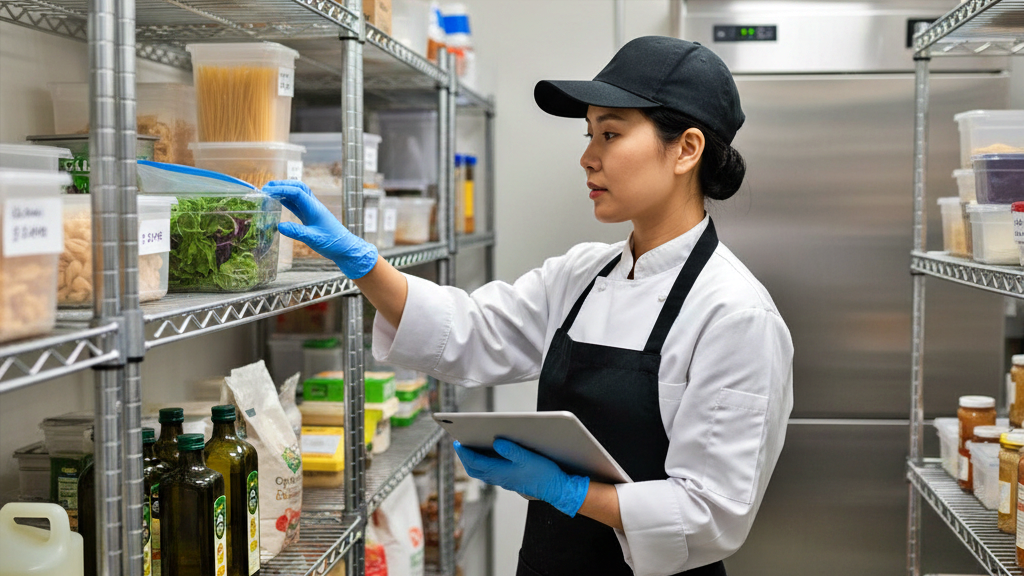Mar 4, 2025
How to Control Food Costs in Restaurants & Boost Profits
-

What is Cost Control?
Cost control is a crucial aspect of restaurant business analysis, aiming to maximize profits by setting realistic financial benchmarks and comparing projections to actual performance. It involves analyzing costs such as food, liquor, and kitchen equipment. Understanding cost control helps maximize profitability, identify expenses, and focus on areas that need improvement, saving money and time.
What is Restaurant Cost Control?
Restaurant food cost control is an ongoing process to lower business costs and generate more profits. It involves determining food and drink costs, finding ways to cut back, and assessing factors affecting costs. Accurate cost control helps predict future profits, set goals, and make growth plans, ultimately aiming to make more money while spending less.
The triple threat of rising costs
Labor costs are skyrocketing
The increase in the minimum wage and the tight labor rules that punish flexibility in scheduling are both contributing factors to the growing price of labor.
Food costs have exploded
The cost of food has skyrocketed as a result of inflation and the high cost of gasoline.
Customer traffic is dwindling
Due to the fact that menu prices are increasing to compensate for these rising expenditures, customer traffic is decreasing, which results in customers having less money available to spend.
This creates a vicious cycle where every cost increase leads to higher prices, which in turn drives away customers. It's a frustrating and seemingly inescapable situation for many restaurant managers. The stress is real, and some are simply throwing in the towel.
But now is not the time to give up. Now is the time to double down on what you can control.
Manage your business within your four walls.
Labor Management
Optimize scheduling: Manage labor tightly without sacrificing service or speed. Utilize technology and forecasting tools to predict demand and schedule accordingly.
Maximize employee productivity: Keep your team busy with value-added tasks during every minute of their shifts. "If you've got time to lean, you've got time to clean" takes on a whole new meaning in 2025. Cross-train employees and empower them to take ownership of various tasks beyond their primary roles.
Explore labor-saving solutions: Consider pre-made products or automated systems that can reduce labor costs without compromising quality.
Food Cost Management
Minimize waste: Scrutinize your recipes for opportunities to reduce waste. Implement strict FIFO (First In, First Out) procedures and use date labels.
Streamline your menu: Reduce the number of items on your order guide and utilize ingredients in multiple recipes.
Optimize inventory management: Embrace vacuum packing and advanced storage methods to extend shelf life. Consider purchasing smaller packages for low-volume items to maintain freshness.
Adjust prep pars: Regularly analyze sales data and adjust your prep pars to align with current demand.
Fighting Food Costs: How Restaurants Can Win the Battle
The restaurant industry has been hit hard these past few years. Soaring gas prices and inflation have sent food costs through the roof, forcing many restaurants to raise menu prices just to stay afloat. But here's the catch-22: while higher prices might preserve margins in the short term, they can also drive customers away.
We're seeing it now. Customers are tightening their belts, and those once-loyal diners might be thinking twice about that weekly dinner out. So, what's a restaurateur to do? How do you keep food costs down without sacrificing customer traffic?
At OpsAnalitica, we believe the answer lies in controlling what you can control. When it comes to food costs, that means focusing on these key areas:
1. Tighten Up Ordering:
- Leverage your POS system's forecasting and ordering modules. These tools can help you predict demand and order just enough food to meet it, minimizing waste from over-ordering.
- Don't be afraid to place a second order if needed. While it might seem inconvenient, a small second order is better than a large amount of spoilage from an overestimation.
2. Wage War on Waste:
- FIFO is your friend: The "First In, First Out" principle is crucial. Make sure your team is consistently rotating stock and using the oldest ingredients first. This seems like a no-brainer, but with the post-Covid exodus of experienced staff, many restaurants need a refresher on this essential practice.
- Embrace date labels: Actively manage expiration dates and prioritize using items nearing their expiration.
- Empower your managers: Train your managers to identify and minimize spoilage. Give them the tools and authority to make decisions that reduce waste.
.webp)
3. Reimagine Prep and Storage:
- Minimize waste in recipes: Can you adjust your recipes to use ingredients more efficiently without compromising quality? Every ounce saved adds up.
- Avoid unnecessary waste: Sometimes, seemingly small actions can lead to significant waste over time. For example, at Quiznos, we used to trim the curved ends off sub rolls, which resulted in 8% waste per roll! Operators today need to identify and eliminate these types of practices to maximize the ROI on their food costs. Could those two inches of bread have been used for something else? Always look for ways to use every part of your ingredients.
- Optimize storage: For lower-usage items, explore vacuum packing or better storage solutions than just throwing them in the walk-in. Also, look for products that come in smaller package sizes to minimize waste.
4. Streamline Your Menu:
- Say goodbye to the "dogs": Analyze your menu and cut any items that aren't selling well or require specific ingredients used only for those dishes. This can significantly reduce waste and simplify inventory management.
- Reimagine recipes: Try to use ingredients across multiple menu items to maximize their use and minimize the need for specialized ingredients.
The Accountability Factor

Ultimately, the key to managing food costs is holding your team accountable. It's not enough to just know these principles – they need to be put into action consistently, in every location, on every shift.
That's where OpsAnalitica comes in. Our platform helps you:
- Train your team on best practices for food cost management.
- Implement processes that reduce waste and optimize ordering.
- Track key metrics and identify areas for improvement.
- Hold your team accountable for taking action and achieving results.
Anyone can pass a test, but changing behavior requires ongoing support and accountability. OpsAnalitica provides the tools and structure you need to create a culture of cost-consciousness and drive real results.
Ready to take control of your food costs? Click here to learn more about OpsAnalitica.
The Customer Experience
In today's challenging environment, customers are prioritizing the essentials. While exceeding expectations is always a goal, meeting these core needs will build a solid foundation for customer satisfaction:
- Clean and inviting spaces: Customers want to feel comfortable and valued. A clean and well-maintained environment demonstrates respect and care.
- Speed of service: Customers have expectations about how long a service should take. Meet those expectations and communicate any delays proactively.
- Flawless execution: Customers expect their orders to be prepared and delivered correctly every single time. Accuracy and consistency are paramount.
Of course, friendly service is always appreciated! It adds a personal touch and enhances the overall experience. However, in these challenging times, focusing on these core elements will ensure a solid foundation for customer satisfaction.
The New Reality: One Strike and You're Out
Pre-pandemic, customers might have given a restaurant a few chances to redeem themselves after a subpar experience. Today, with tighter budgets and higher expectations, that leniency is gone. Customers are seeking perfection, and they have little tolerance for errors.
Accountability is Key
Controlling what you can control boils down to accountability. At OpsAnalitica, our platform empowers you to establish and maintain that accountability. We help you create and manage processes that address every aspect of your operation, from daily checklists to shift-by-shift performance tracking.
With OpsAnalitica, you gain real-time visibility into your operations, enabling you to identify and address issues proactively. We provide the tools you need to hold your team accountable and ensure consistent execution of critical tasks.
If you're ready to fight for your restaurant's success in these challenging times, OpsAnalitica can help. Learn more by clicking this link: https://www.opsanalitica.com/contact
Let's take control together.

As I sat in the general session at the recent Denny's conference, a key message from CEO Kelli Valade resonated deeply: "Control what you can control." This simple yet powerful statement is more crucial than ever in today's turbulent restaurant industry. It's no secret that restaurant owners are feeling the squeeze.
Ready to Improve Your Operations?
Get our FREE checklists to streamline processes, boost efficiency, and save time.



